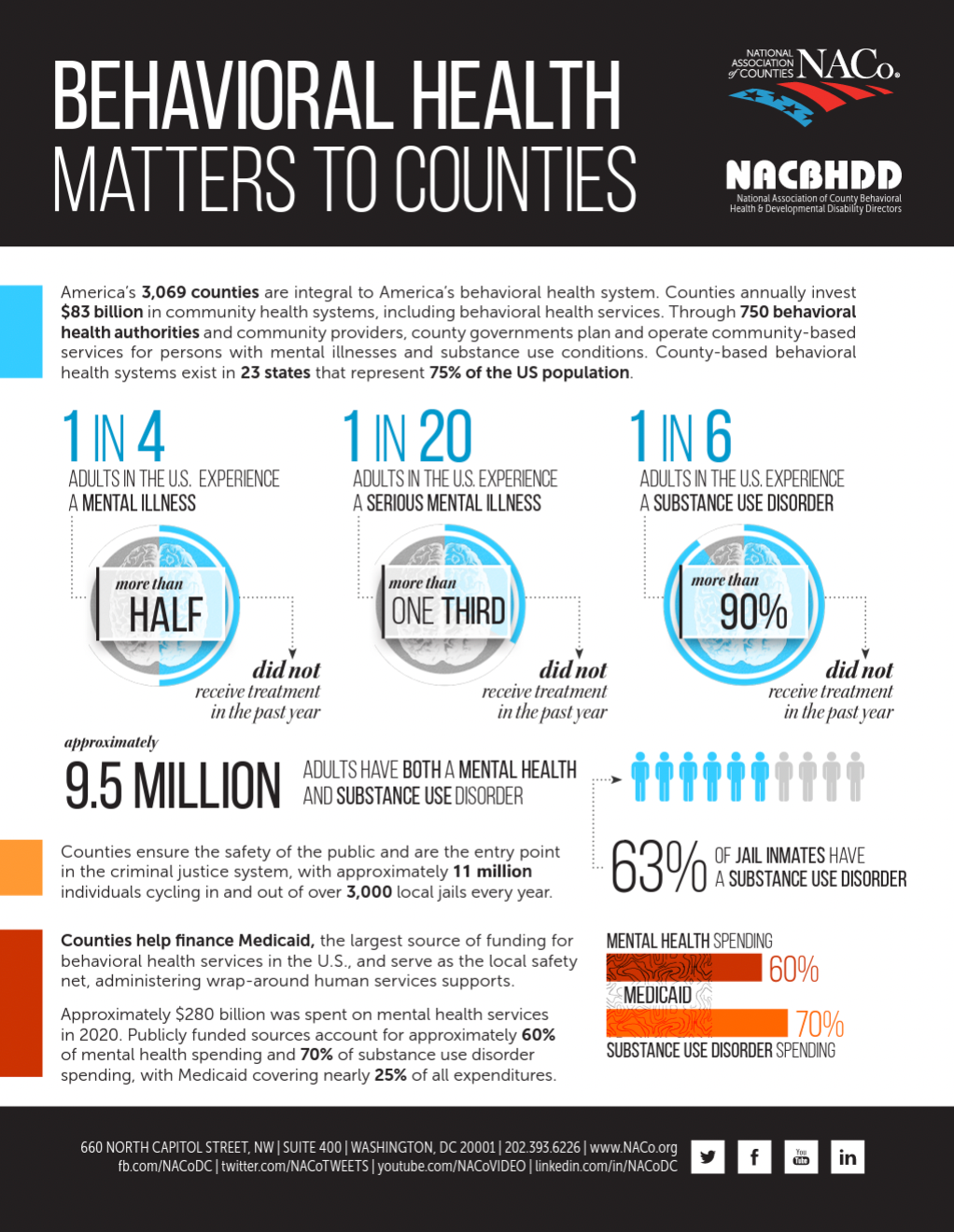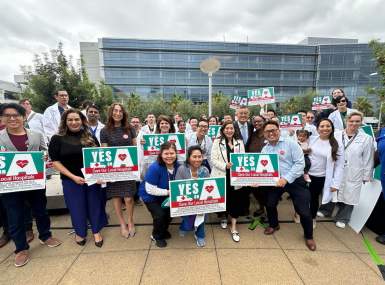Behavioral Health Matters to Counties

Author

Blaire Bryant
Legislative Director, Health | Large Urban County Caucus
Upcoming Events
Related News
America’s 3,069 counties are integral to America’s behavioral health system. Counties annually invest $83 billion in community health systems, including behavioral health services. Through 750 behavioral health authorities and community providers, county governments plan and operate community-based services for persons with mental illnesses and substance use conditions. County-based behavioral health systems exist in 23 states that represent 75% of the US population.
Tagged In:






